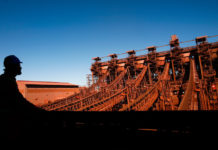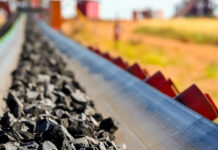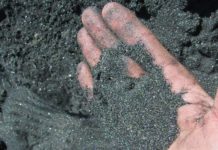
MERAFE Resources posted a 62% decline in full year earnings ended-December owing to a hefty decline in ferrochrome sales and a rise in costs.
Its numbers were also impacted by the R575m write-down of its Boeshoek smelter which has resulted in a review of operations amid ballooning electricity prices.
Merafe announced on February 3 that it was considering shuttering “certain” of its operations owing to an unsustainable increase in operational costs. It didn’t specify how much ferrochrome output it would cut but it could results in thousands of job losses.
Merafe Resources has a 20.5% stake in the Glencore-Merafe Joint Venture with the balance held by UK-listed diversified mining group, Glencore.
“First prize would be a decent electricity price so that we can be competitive, which will mean we can beneficiate more locally rather than in China, and therefore create more jobs in South Africa,” said Japie Fullard, head of ferroalloys for Glencore on February 10.
“If we as South Africa don’t do something, more and more mining industry smelters will close,” he added. The Glencore-Merafe JV has already closed 10 of its 22 furnaces over the past four years with the loss of 1,800 jobs, said BusinessLive.
Merafe declared a final dividend of R200m (eight cents per share) bringing total dividends for its 2024 financial year to R700m (2023: R1.05bn). The company had cash of R1.8bn comprising R603m in cash held by Merafe and a R1.2bn share held in the JV as of December 31.
Sales fell 9% to 298,000 tons (2023: 327,000 tons) which contributed towards a 14% decline in ferrochrome revenue, also influenced by a 6% decline in prices. The outcome at the headline earnings level was a 29% year-on-year decline to 42.9 SA cents per share.
“Earnings slumped by 62% to R667m, after the full impairment of the Boshoek smelter of R575m,” said Merafe in notes to its published numbers. “Ferrochrome prices were impacted by surplus supply as a result of new Chinese production capacity,” it said.
Commenting on the ferrochrome market, Merafe said strong growth in stainless steel demand was offset by a 25% surge in low cost Chinese ferrochrome production. This “significantly compressed global smelter margins,” said Merafe.
“Consequently, the ferrochrome oversupply resulted in a sharp decline in ferrochrome prices during H2 2024, which in turn led to a decrease in chrome ore prices,” it said.
Merafe said it anticipated market volatility this year owing to “geopolitical tensions, protectionist policies, ongoing regional wars and potential slowdowns in Chinese industrial production”. While declining global interest rates might help, inflationary concerns and currency volatility remain risks”.
The prospect of closures at Merafe’s operations throws the spotlight on the ferrochrome sector in which South Africa which – with 70 to 80% of the world’s resources of chrome ore – was once a world leader. Over the decade most of the processing has relocated to China, which now smelts more than 70% of the chrome ore South Africa digs out of the ground.










